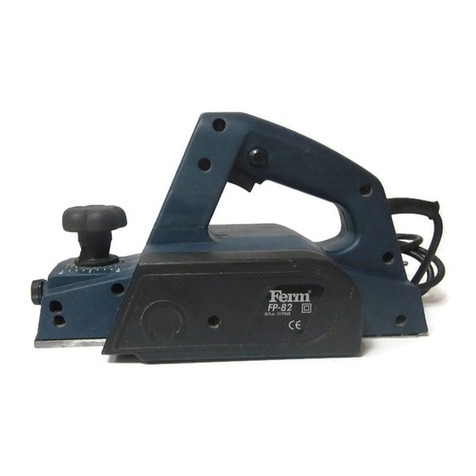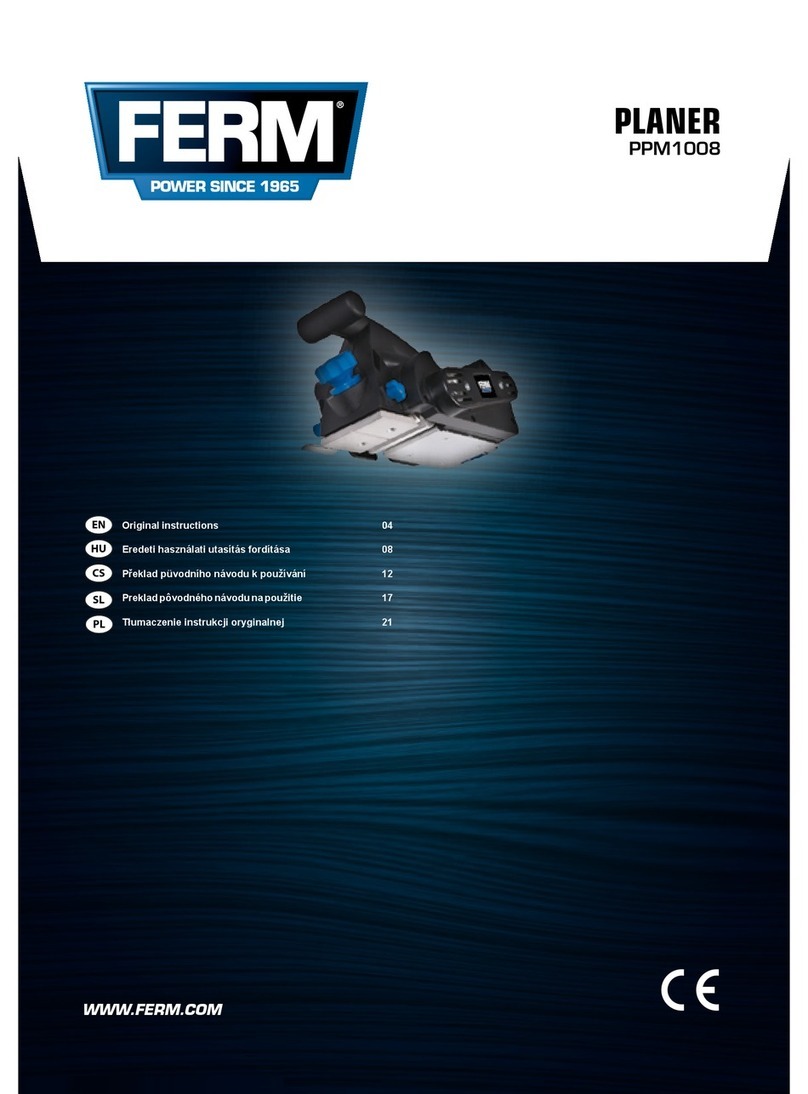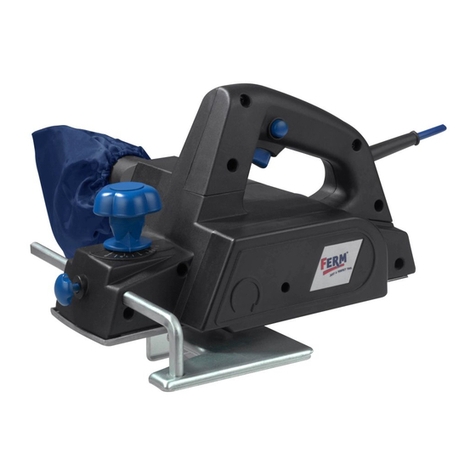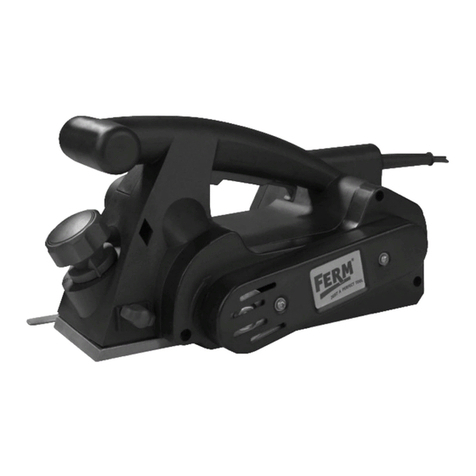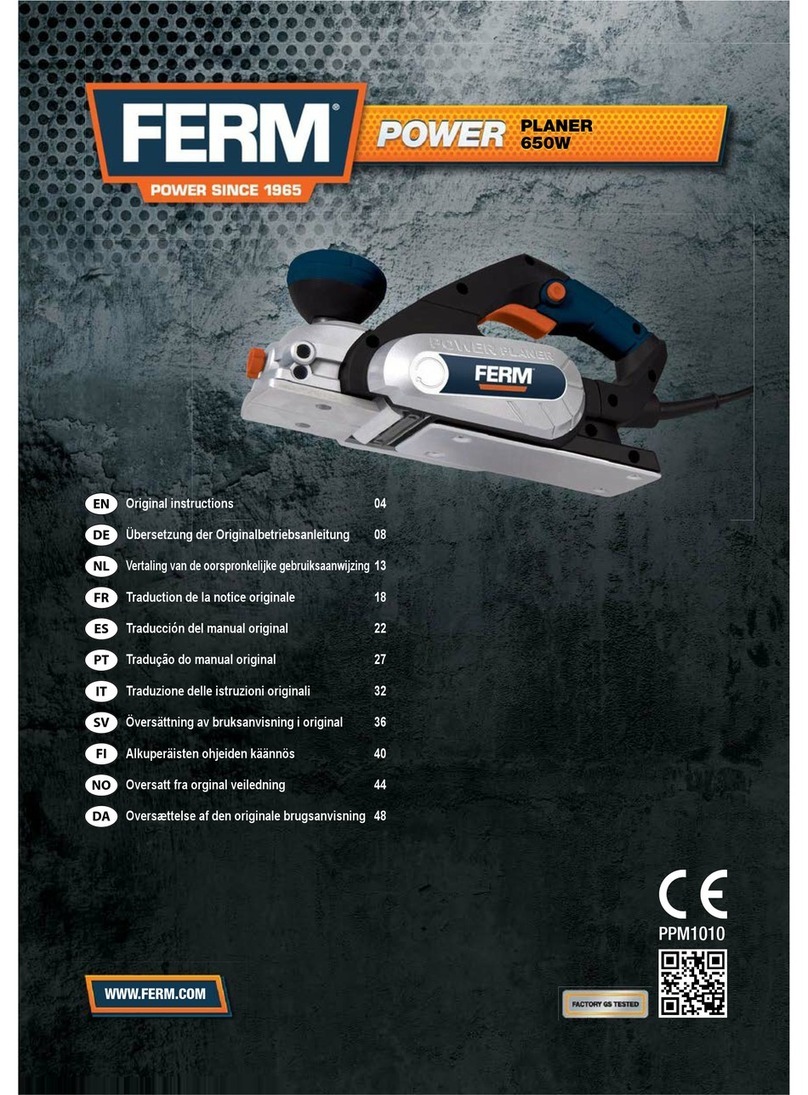10
NL
het vermogen van de machine. De aders moeten
een doorsnede hebben van minimaal 1,5 mm2.
Wanneer het verlengsnoer op een haspel zit, rol
het snoer dan helemaal af.
3. IN BEDRIJFSTELLING
Voordat u het apparaat instelt, repareert
of er onderhoud aan gaat plegen, dient u
altijd de machine eerst uit te schakelen en
de stekker uit het stopcontact te halen!
Voor inbedrijfstelling
• Controleer of de nominale spanning en de
nominale frequentie van het elektriciteitsnet
overeenkomen met de gegevens op het
typeplaatje.
• Plaats de werktafel op een stabiele en vlakke
ondergrond.
Werking
Fig. 1
• Draai, om de schaafdiepte in te stellen, aan
de stelknop (1) in de richting van de wijzers
van de klok. Op de stelknop bevindt zich een
wijzer, die de schaafdiepte in mm aangeeft.
Draai net zo lang aan de stelknop, totdat de
gewenste schaafdiepte wordt aangegeven.
Wijzig gedurende uw schaaf–
werkzaamheden nooit de schaafdiepte,
omdat er anders een ongelijkmatig
oppervlak ontstaat. Stel, om fouten te
voorkomen, na het schaven de stelknop
altijd weer op stand “0”.
• Bevestig het werkstuk met klemhaken of iets
dergelijks.
• Plaats de voorste zool op de rand van het
werkstuk en wel zo, dat de beitels het werkstuk
nog niet aanraken. Het werkstuk moet vlak zijn.
In- en uitschakelen
Afb. A
• Schakel het apparaat in met een druk op de
Aan/Uit-schakelaar (3). Wanneer u de Aan/Uit-
schakelaar (3) los laat, schakelt u het apparaat
uit.
Knop voor vergrendeling in de Aan-stand
Afb. A
• U kunt de Aan/Uit-schakelaar (3) vergrendelen
door de Aan/Uit-schakelaar (3) in te drukken
en vervolgens de knop (4) voor vergrendeling
in de Aan-stand in te drukken.
• U kunt de vergrendeling van de schakelaar
opheffen door kort weer op de Aan/Uit-
schakelaar (3) te drukken.De schaafmachine
is nu ingeschakeld en u kunt de release-knop
loslaten.
• Houd de schaafmachine altijd vast met
beide handen op de hendels; hierdoor
heeft u een optimale controle over de
schaafwerkzaamheden.Bovendien voorkomt u
hiermee dat uw handen in contact komen met
de bewegende delen van de machine.
• Als de machine het hoogste toerental heeft
bereikt, kan deze naar voren over het werkstuk
worden geschoven. Oefen in het begin van
de schaafbeweging een beetje druk op de
voorzijde en aan het einde op de achterzijde
van het apparaat uit. Hierdoor blijft het
apparaat vlak op het werkstuk en worden de
hoeken niet afgerond.
• Om een effen en glad oppervlak te krijgen,
gebruikt u een grote schaafdiepte voor het
ruwschaven en een kleine schaafdiepte voor
het in laagjes schaven. Houd het elektrisch
apparaat gedurende de werkzaamheden
recht, omdat er anders een oneffen oppervlak
zal ontstaan. Schakel na afloop van de
werkzaamheden het apparaat uit en trek de
stekker uit het stopcontact.
Het afschuinen van randen
Fig. 1
Dankzij de V-groef in de schaafschoen kunnen
randen van het werkstuk heel eenvoudig worden
afgeschuind. Plaats de schaafmachine met de
V-groef (7) op de rand van het werkstuk en geleid
de machine over de af te schuinen rand.
Pas op! Gebruik de spindelvergrendeling
uitsluitend als de machine stilstaat.
• Let er op, dat uw hand tijdens de
werkzaamheden nooit met het werkstuk in
aanraking komt.







